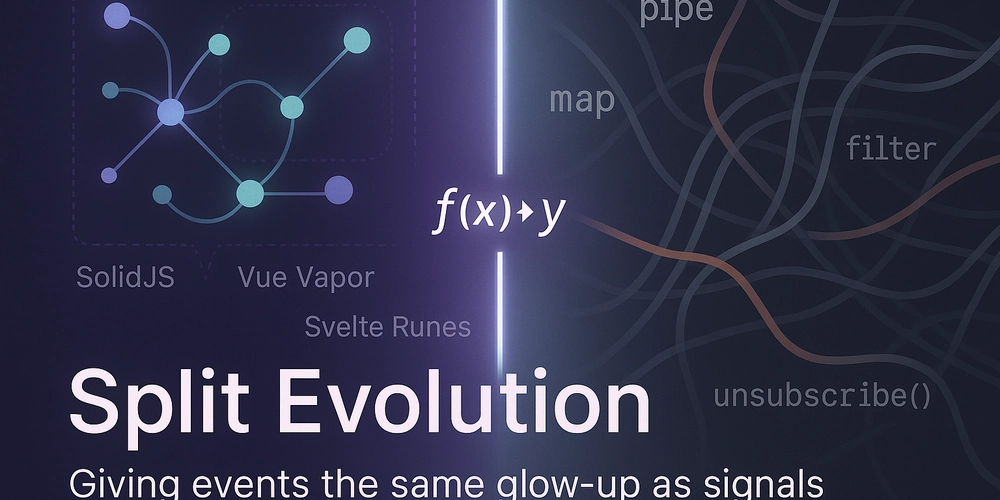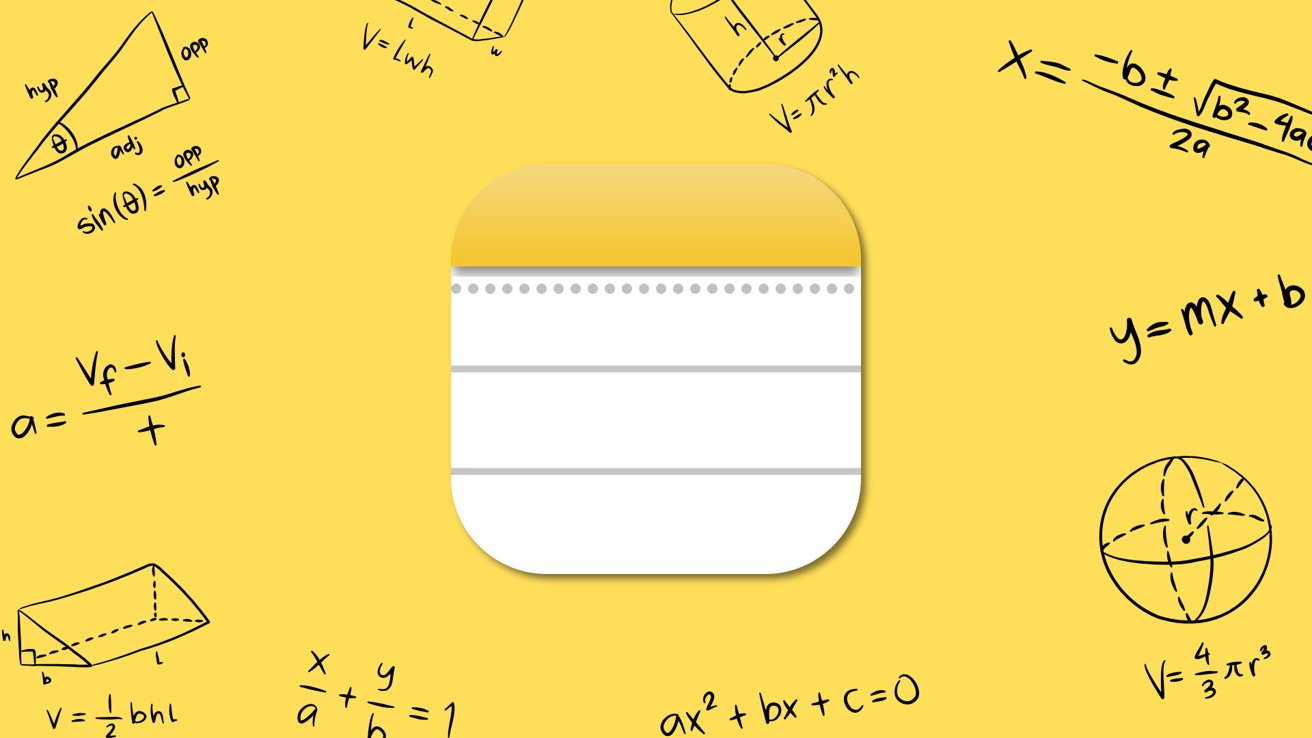Async Transformations in Reactivity
Structured async behavior in a reactive event system This post is part of the Transformations in Reactivity series — an exploration of how ideas from modern signal-based systems (like SolidJS 2.0) can be extended to event-based reactivity. In this chapter, we focus on async coordination: giving event systems the same structural lifecycle handling that createAsync brought to signals — including pending state, error propagation, and scoped retries. 1. The Async Challenge Signals and events each approach async behavior differently — and each has its limitations. Signals are synchronous. They represent current state and return values immediately, but can't represent "waiting" unless the developer adds manual flags or wrappers. Events, on the other hand, are naturally asynchronous. They push values over time — but their lifecycle is flat. There’s no structured way to know when an async handler starts, only when it finishes. Solid 2.0 introduced structural async handling to signals. Can we do the same for events? 2. Structural Async in Solid 2.0 Solid 2.0's createAsync integrated async state into signals structurally: Unresolved signals throw to suspend. Errors propagate up the graph. Derived signals and effects remain clean. This made async "colorless" — the graph handles lifecycle transitions without leaking async details into consumer code. Can we design an equivalent model for events that maintains their async push model, but adds structure for pending, error, and retry states? 3. Representing Async in Events Events traditionally emit next(), error(), and optionally complete(). But they lack structure for intermediate async states. To mirror signals' suspension behavior, we introduce wait() — a lifecycle notification emitted when async work starts. This lets downstream dependents know something is in progress. With this, events gain a structured lifecycle: wait(), next(), error(). The graph can now react to pending states declaratively. 4. Composable Async with createAsyncEvent and createSyncEvent createAsyncEvent Transforms a source event and an async function into a lifecycle-aware event: const onValidated = createAsyncEvent(onSubmit, async (form) => { await validate(form) }) Usage: createListener(onValidated, { wait: () => console.log("Validating..."), next: () => console.log("Validation passed"), error: (err) => console.error("Validation failed", err) }) createSyncEvent Converts an event lifecycle into a Promise for use in signal-based boundaries: const [promise, setPromise] = createSignal() createListener(createSyncEvent(onValidated), setPromise) const ready = createAsync(() => promise()) This bridges async events with Suspense and error boundaries cleanly. 5. Scoped Retry with Async Event Context Async events establish a scoped event context shared with downstream dependents. This context exists synchronously across async boundaries. The async handler can register a retry() function into this context. Listeners can invoke it structurally: createListener(onValidated, { error: (err) => { getEventContext()?.retry() } }) This retry mechanism is: Scoped to the current async flow. Isolated from sibling branches. Available declaratively in error callbacks. Because each async operation clones and propagates its context, retry remains accessible across the entire event graph. 6. Background Work with runTransaction Event context enables scoped execution environments across async boundaries. With runTransaction, we can defer side effects until the entire flow is complete: const result = await runTransaction(() => { emitSubmit() emitAnotherAction() }) Inside a transaction: wait() and next() notifications are deferred. Errors are surfaced through the returned promise. Side effects are suppressed until completion. This allows for "background" async work without leaking intermediate states into the UI. Unlike global transactions in Solid or React, each runTransaction here is fully scoped and supports concurrent flows. Transactions and Signals Events manage flow. Signals manage state. For complete transactional behavior: Events provide scoped async context and flow control. Signals provide state forking and rendering isolation. A unified API can compose both: runTransaction (events) startTransition (signals) Ensuring transactional updates complete only when both flow and state are settled. Conclusion By structuring async lifecycles, scoping retries, and deferring side effects through transactions, we can bring event systems to parity with modern signals — while retaining their natural strengths as push-based, stateless primitives. Next: we’ll explore how to bring granular propagation to events, ensuring updates only notify the parts of the graph that actually care.

Structured async behavior in a reactive event system
This post is part of the Transformations in Reactivity series — an exploration of how ideas from modern signal-based systems (like SolidJS 2.0) can be extended to event-based reactivity.
In this chapter, we focus on async coordination: giving event systems the same structural lifecycle handling that
createAsyncbrought to signals — including pending state, error propagation, and scoped retries.
1. The Async Challenge
Signals and events each approach async behavior differently — and each has its limitations.
Signals are synchronous. They represent current state and return values immediately, but can't represent "waiting" unless the developer adds manual flags or wrappers.
Events, on the other hand, are naturally asynchronous. They push values over time — but their lifecycle is flat. There’s no structured way to know when an async handler starts, only when it finishes.
Solid 2.0 introduced structural async handling to signals. Can we do the same for events?
2. Structural Async in Solid 2.0
Solid 2.0's createAsync integrated async state into signals structurally:
- Unresolved signals throw to suspend.
- Errors propagate up the graph.
- Derived signals and effects remain clean.
This made async "colorless" — the graph handles lifecycle transitions without leaking async details into consumer code.
Can we design an equivalent model for events that maintains their async push model, but adds structure for pending, error, and retry states?
3. Representing Async in Events
Events traditionally emit next(), error(), and optionally complete(). But they lack structure for intermediate async states.
To mirror signals' suspension behavior, we introduce wait() — a lifecycle notification emitted when async work starts. This lets downstream dependents know something is in progress.
With this, events gain a structured lifecycle: wait(), next(), error(). The graph can now react to pending states declaratively.
4. Composable Async with createAsyncEvent and createSyncEvent
createAsyncEvent
Transforms a source event and an async function into a lifecycle-aware event:
const onValidated = createAsyncEvent(onSubmit, async (form) => {
await validate(form)
})
Usage:
createListener(onValidated, {
wait: () => console.log("Validating..."),
next: () => console.log("Validation passed"),
error: (err) => console.error("Validation failed", err)
})
createSyncEvent
Converts an event lifecycle into a Promise for use in signal-based boundaries:
const [promise, setPromise] = createSignal()
createListener(createSyncEvent(onValidated), setPromise)
const ready = createAsync(() => promise())
This bridges async events with Suspense and error boundaries cleanly.
5. Scoped Retry with Async Event Context
Async events establish a scoped event context shared with downstream dependents. This context exists synchronously across async boundaries.
The async handler can register a retry() function into this context. Listeners can invoke it structurally:
createListener(onValidated, {
error: (err) => {
getEventContext()?.retry()
}
})
This retry mechanism is:
- Scoped to the current async flow.
- Isolated from sibling branches.
- Available declaratively in error callbacks.
Because each async operation clones and propagates its context, retry remains accessible across the entire event graph.
6. Background Work with runTransaction
Event context enables scoped execution environments across async boundaries.
With runTransaction, we can defer side effects until the entire flow is complete:
const result = await runTransaction(() => {
emitSubmit()
emitAnotherAction()
})
Inside a transaction:
-
wait()andnext()notifications are deferred. - Errors are surfaced through the returned promise.
- Side effects are suppressed until completion.
This allows for "background" async work without leaking intermediate states into the UI.
Unlike global transactions in Solid or React, each runTransaction here is fully scoped and supports concurrent flows.
Transactions and Signals
Events manage flow. Signals manage state.
For complete transactional behavior:
- Events provide scoped async context and flow control.
- Signals provide state forking and rendering isolation.
A unified API can compose both:
-
runTransaction(events) -
startTransition(signals)
Ensuring transactional updates complete only when both flow and state are settled.
Conclusion
By structuring async lifecycles, scoping retries, and deferring side effects through transactions, we can bring event systems to parity with modern signals — while retaining their natural strengths as push-based, stateless primitives.
Next: we’ll explore how to bring granular propagation to events, ensuring updates only notify the parts of the graph that actually care.




















































-Abstract-Background-102024-SOURCE-Thuma.jpg)

















































































































![[The AI Show Episode 147]: OpenAI Abandons For-Profit Plan, AI College Cheating Epidemic, Apple Says AI Will Replace Search Engines & HubSpot’s AI-First Scorecard](https://www.marketingaiinstitute.com/hubfs/ep%20147%20cover.png)

























![How to Enable Remote Access on Windows 10 [Allow RDP]](https://bigdataanalyticsnews.com/wp-content/uploads/2025/05/remote-access-windows.jpg)































































































![[DEALS] The 2025 Ultimate GenAI Masterclass Bundle (87% off) & Other Deals Up To 98% Off – Offers End Soon!](https://www.javacodegeeks.com/wp-content/uploads/2012/12/jcg-logo.jpg)









































































![Legends Reborn tier list of best heroes for each class [May 2025]](https://media.pocketgamer.com/artwork/na-33360-1656320479/pg-magnum-quest-fi-1.jpeg?#)

































































_KristofferTripplaar_Alamy_.jpg?width=1280&auto=webp&quality=80&disable=upscale#)




















































































-xl.jpg)











![SoundCloud latest company to hit trouble with AI clause in T&Cs [U]](https://i0.wp.com/9to5mac.com/wp-content/uploads/sites/6/2025/05/SoundCloud-latest-company-to-hit-trouble-with-AI-clause-in-TCs.jpg?resize=1200%2C628&quality=82&strip=all&ssl=1)


















![Vision Pro May Soon Let You Scroll With Your Eyes [Report]](https://www.iclarified.com/images/news/97324/97324/97324-640.jpg)
![Apple's 20th Anniversary iPhone May Feature Bezel-Free Display, AI Memory, Silicon Anode Battery [Report]](https://www.iclarified.com/images/news/97323/97323/97323-640.jpg)






































































































